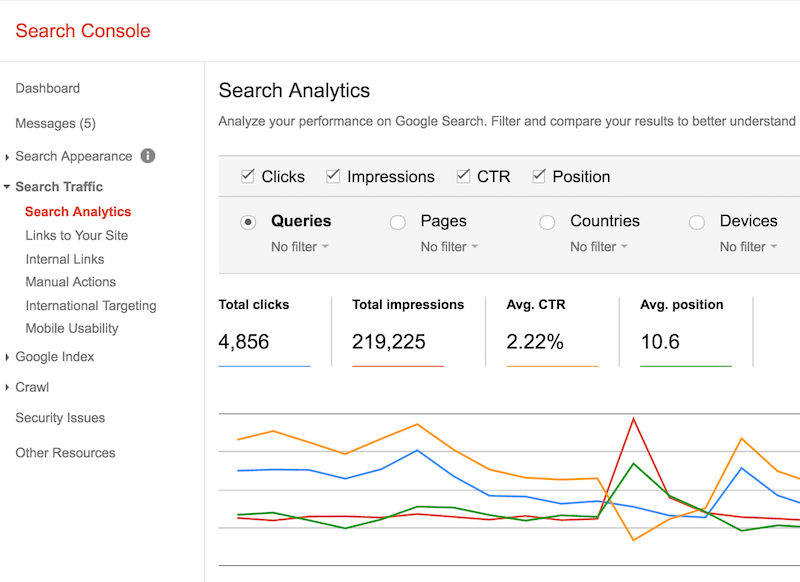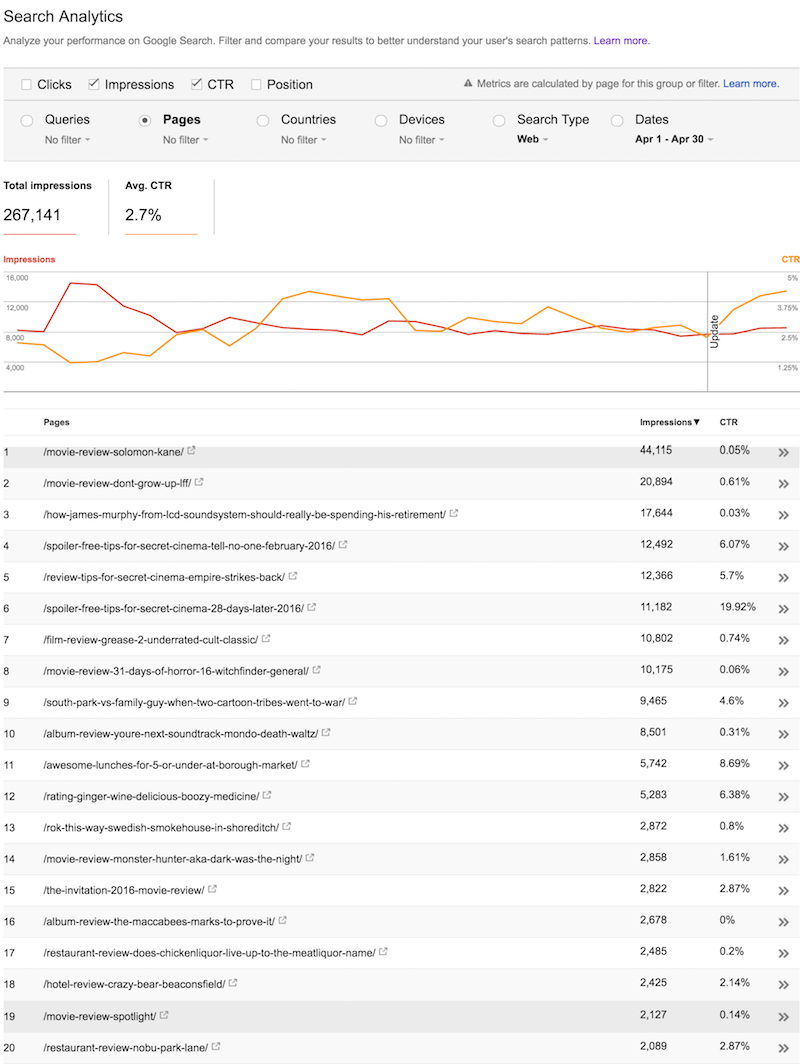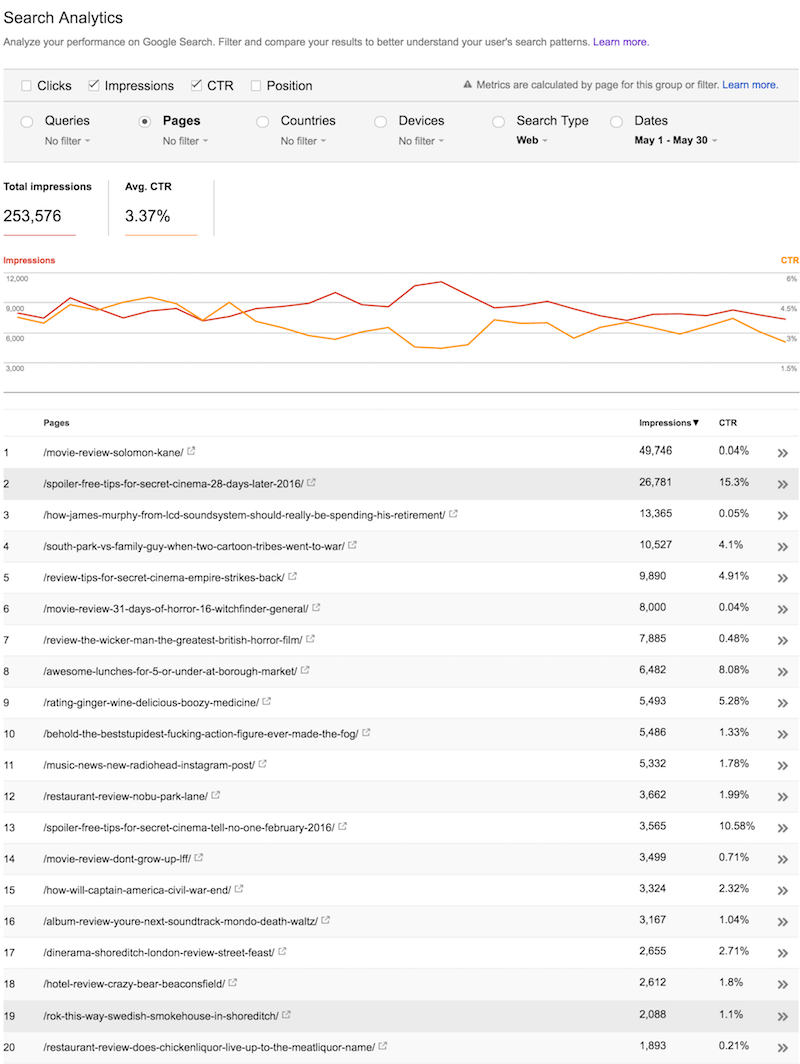Last month I wrote a comprehensive guide on how to use Google Search Console, covering every aspect of what is essentially a giant toolshed full of useful stuff for all webmasters to use.
It was exhaustive, and probably exhausting. Don’t read the whole thing in one sitting, just dip in and out when you come across something you’re unsure about.
While wading through Search Console’s huge amount of features, I noticed a few elements that deserved to be highlighted, not only because I had no idea they existed or were even accessible to webmasters, but also because they can probably help raise your click-through rate (CTR) on search engine results pages (SERPs), or at the very least, show you where to improve.
The first thing you need to be aware of is this… You can see all the search queries that bring traffic to your site in Search Console.
Yeah it was a massive pain when Google encrypted your search terms Google Analytics and replaced them with the ambiguous (not provided) but at least you can still find them here…
Just go to Search Console, then click on Search Traffic>Search Analytics.

There you go, a veritable bounty of delicious search terms, keywords and traffic-generating pages.
Now here’s the really good bit…
How can I use Search Console to help improve my CTR?
As I said in my original Search Console walkthrough, here you can toggle between a variety of options, filters and date-ranges.
Here are the Impressions and CTR for my own website Methods Unsound for April 2016:

Using this simple overview, ordered by number of impressions, I can see which posts have the highest visibility, but also the ones with a relatively low CTR.
Perhaps all these pages need is a tweak of a meta-description or the addition of some structured data?
And that’s what I did. I went through every article in the top 20 and I made a number of changes to them in the CMS, including using the recommendations as featured in my guide to writing meta descriptions and guide to writing title tags.
These included:
- Making sure the most important keywords for the webpage showed up in the meta description.
- Making sure the most important keywords were first in title tags.
- Rewrote meta descriptions so they were more legible and meaningful.
- Made sure the meta descriptions were as compelling and as relevant as possible.
- Made sure meta descriptions were no longer than 135 – 160 characters long
- Made sure title tags were 50-60 characters long, including spaces.
- Made sure headlines (<h1> tag) were different from the title tag.
- Removed duplicate meta descriptions and title tags.
- Used rich snippets, in the form of Schema markup, to add elements such as visible star ratings to my results.
The results
Looking at the following 28 day period’s Impressions and CTR, here’s what I achieved in making these small changes…

For some of the individual posts, there’s a negligible difference of 0.02% (and sometimes not in the direction I intended) however for others there’s an improvement of nearly 6%.
Overall, the average CTR for the site has risen from 2.7% to 3.37%, but as you should already be pointing out, this can also be attributed to wealth of other factors – seasonal changes in traffic, algorithm fluctuations, general site health.
This is far from an exact science, but what my intention is here is to show you that using Search Console you can clearly see which of your posts are doing well in terms of visibility but poor for click-through, and that by sticking to a few basic SEO techniques, you can make a difference.
The article How to improve your CTR using Google Search Console was first seen from https://searchenginewatch.com
No comments:
Post a Comment